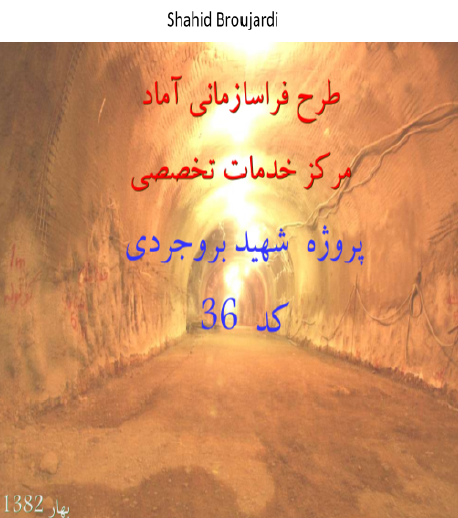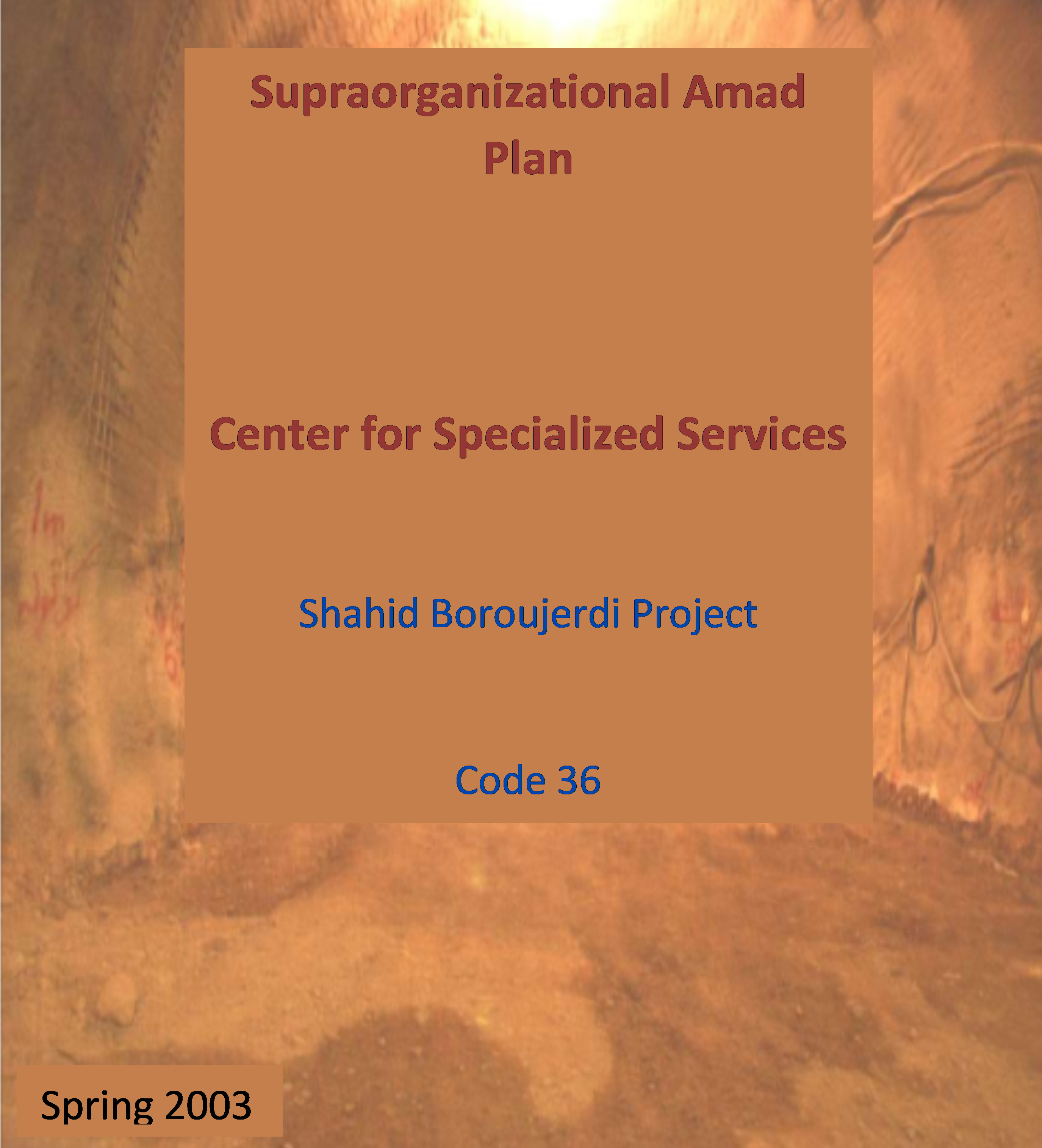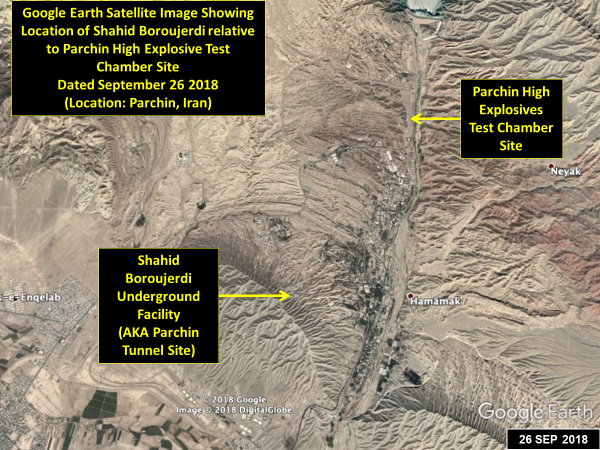Reports
Summary of Report: A Key Missing Piece of the Amad Puzzle: The Shahid Boroujerdi Project for Production of Uranium Metal and Nuclear Weapons Components [1]
by David Albright, Olli Heinonen, Frank Pabian, and Andrea Stricker
March 6, 2019
• The Nuclear Archives reveals a major, former nuclear weapons site under Project 110 of the Amad Plan that was not previously identified. Project 110 was charged with the development and production of nuclear warheads;
• The most likely purpose of this site was as a production-scale facility to manufacture uranium metal components for nuclear weapons, fulfilling Iran’s long-time quest to acquire and develop uranium metallurgy and components suitable for nuclear weapons;
• Commercially available satellite imagery analysis supports these findings;
• This facility was likely not completed when the Amad program was reoriented in late 2003;
• The International Atomic Energy Agency (IAEA) has not visited this site, and Iran has not declared it, even though it was designed and was being built to handle nuclear material that should have been subject to safeguards. It needs to inspect this site as well as other sites discussed in the archive; in particular it should verify sites, locations, facilities, documentation, equipment, and materials involved in these activities, and urge Iran to cooperate fully in these investigations.


Documentation seized in January 2018 by Israel from the Iranian “Nuclear Archive” revealed key elements of Iran’s past nuclear weaponization program and the Amad program more broadly, aimed at development and production of nuclear weapons. In particular, the Institute obtained a subset of the documents in the archives from the media and Israel. We have independently corroborated and assessed about 40 pages of this information related to the Shahid Boroujerdi project, which indicates that Iran was building a secret underground nuclear weapons site, not known to Western intelligence and the IAEA prior to the discovery of the archive.
A subproject of the Amad program under Project 110 (designed to produce the contents of a spherical warhead payload) was authorized and given the code name of the Shahid Boroujerdi project. Because this Amad project was directly under Project 110, the purpose was related to nuclear warheads. Documents show that the project was likely to make on a production-scale highly enriched uranium weapon components for the core of nuclear weapons.
A relatively large complex with many rooms was planned to be located in a tunnel complex. Based on the information available and confirmed by commercial satellite analysis, a site was selected for this project in the Parchin Military Complex.

Construction of this facility, which began April 30, 2002 and was slated to end on May 20, 2003, advanced quickly. The tunnel complex is in the shape of a “U” with two tunnel entrances. This plan can be exactly correlated with commercial satellite imagery.
Descriptions of the facility refer to halls and workshops dedicated to uranium metal reduction, melting and casting and metal forming of nuclear weapon components, with a fully buried machine shop. Laboratories for quality control, metallurgy and chemical analysis were to be located nearby.
The documents reveal a delay from the project’s original expected completion date of May 20, 2003, but it was making steady progress by then. The documents do not contain information on the completion of the facility.
Iran has not declared this site to the IAEA. The IAEA did not know about this facility being part of Amad. Also, until Israel seized the Nuclear Archive, the IAEA had a limited amount of information indicating that Iran was developing a capability to produce uranium metal for nuclear weapons.
The contract to build the tunnel complex at the Parchin site was signed by Sahed Shamsuddin Borborudi, then representing the Institute for Training and Research of Defense Industries of Iran’s Defense Ministry, and Amir Hajizadeh, then of the Headquarters of the Aerospace Force of the Army of the Guardians of the Islamic Revolution. These two signatories are now senior officials in Iran’s ballistic missile and nuclear programs. Since 2009, Hajizadeh has been Commander of the Aerospace Force of the Army of the Guardians of the Islamic Revolution (known in the U.S. as the IRGC Aerospace Force). Borborudi later became Deputy Head of AEOI. Both have been sanctioned under UN Security Council resolutions and European Union sanctions, but to our knowledge, neither is listed on any U.S. sanctions list. The continuity of these senior officials in missile and nuclear organizations is a sobering reminder that key Iranian personnel from the Amad program remained highly influential after 2003 in the day-to-day activities critical to maintaining a capability to make and deliver nuclear weapons.
The Parchin site deserves further scrutiny. Our review of a Google Earth image from September 26, 2018 shows that the tunnel complex appears to have been repurposed. Given its previous nuclear weapons fabrication subordinate to the Amad project, the tunnel complex and equipment slated for this facility should be investigated by the IAEA. It should also investigate whether this site, which was intended to handle nuclear material for nuclear weapons, was a violation of the comprehensive safeguards agreement and the Nuclear Non-Proliferation Treaty.
The new information derived from the Iran Nuclear Archives adds more urgency to efforts to create an accurate, complete history of Iran’s nuclear weapons efforts and to obtain answers from Iran about the fate of the equipment, material, technology and personnel from the Shahid Boroujerdi project, and more broadly, the Amad and successor programs. The existence of an extensive nuclear weapons archive raises questions about whether Iran is complying with its comprehensive safeguards agreement, the Additional Protocol, the Joint Comprehensive Plan of Action and the Nuclear Non-Proliferation Treaty.
Additional summaries of our Iran Nuclear Archive analyses can be found here.
[1] The full version of the report is available at: https://www.fdd.org/analysis/reports/2019/01/11/a-key-missing-piece-of-the-amad-puzzle/ or http://isis-online.org/isis-reports/detail/a-key-missing-piece-of-the-amad-puzzle

 twitter
twitter